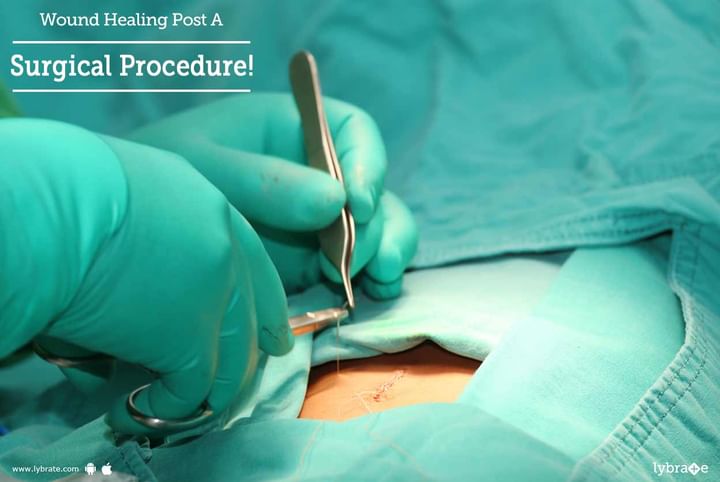Wound Healing Post A Surgical Procedure!
What is wound healing?
Wound healing is a process in which the body repairs itself after an injury by the complex mechanism by replacing destroyed tissues. It includes three types of intentions, and they are as follows:
1. Healing by primary intention
It includes healing in which restoration of continuity occurs by fibrous adhesion. Formation of granulation tissue does not take place and results in a thin scar.
2. Healing by secondary intention
In this type, healing takes place by adhesion of granulating surfaces. It occurs when the edges of the wound are far apart, and cannot be brought together.
3. Healing by tertiary intention
It is a combination of primary and secondary intention healing. In this type, the gradual filling of a wound cavity occurs by granulations, and by cicatrix formation. In this process various growth factors are involved, such as epidermal growth factor, vasculo-endothelial growth factor, platelet-derived growth factor.
How wound healing occurs?
Wound healing is divided into following phases:
- Establishment of rapid homeostasis: In this phase, the actual bleeding stops. It is accomplished by vasoconstriction, in which blood vessels contract to stop bleeding.
- Stage of inflammation: During this phase neutrophils (white blood cells) proliferates at the site of a wound to destroy bacteria, and to remove debris. The neutrophils are at highest count between 24, and 48 hours after an injury, and get reduced after 3 days. After that specialized cells called macrophage arrives to continue the process. These cells secrete growth factors and proteins that facilitate tissue repair. This phase lasts for 4 to 6 days and shows symptoms of edema, redness, heat, and pain.
- Proliferation and migration of the cells: During the process of inflammation, the body releases cell which causes migration, and proliferation. In this phase, epithelial cells proliferate to overlap the wound, and this phase can last from 4 days to 24 days.
- Formation of blood vessel: It is also known as angiogenesis. In this process body’s cells begin to replace the veins, and arteries which are damaged. In this process, the body either creates new vessels or adds onto the existing vessels. Along with this collagen deposition, granulation formation also occurs.
- Stage of reepithelialization: Once the blood vessels are formed, the damage tissues also start regrowing.
- Stage of synthesis: It is the last step, or it can occur simultaneously with above stages. In this process, blood clots are formed, which helps in prevention of further bleeding.
What are the complications of wound healing?
Most common complications are as follows:
- Deficient scar formation
- Excessive scar formation, such as a hypertrophic scar, keloids, etc.
- Deficient contraction of wound or excessive contraction
- Infection
In case you have a concern or query you can always consult an expert & get answers to your questions!



+1.svg)
